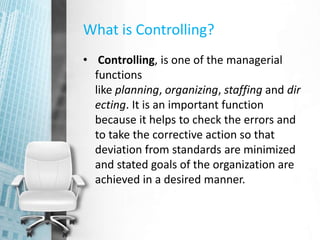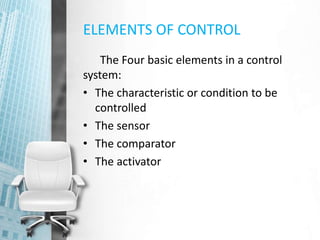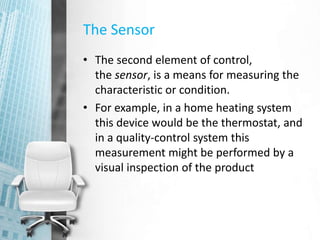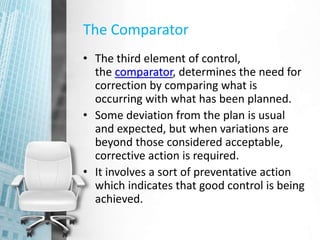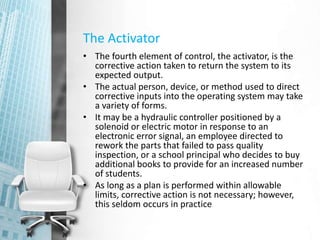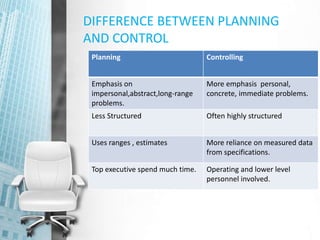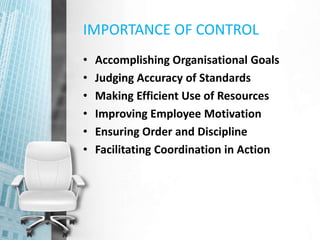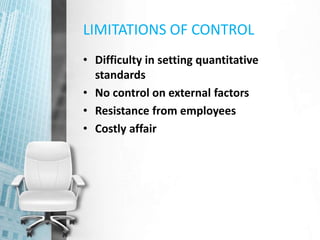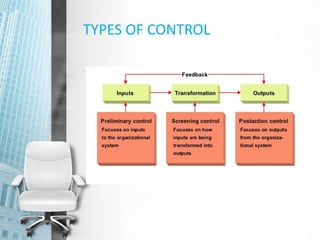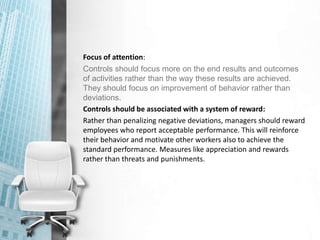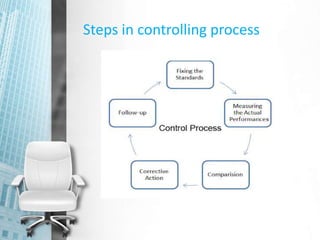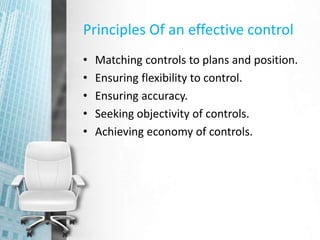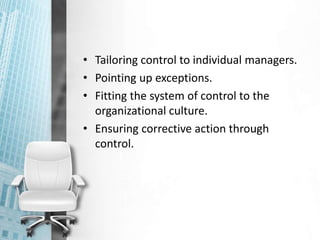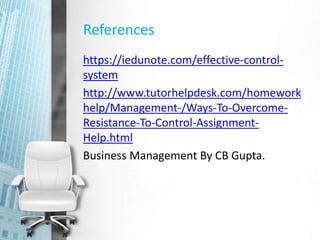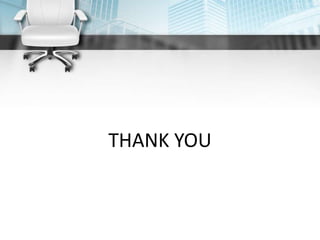Controlling is one of the key managerial functions along with planning, organizing, staffing and directing. It helps check for errors and take corrective actions to ensure goals are achieved as planned. Control is an ongoing process that compares actual performance to plans at each level of the organization. The four basic elements of an effective control system are: the characteristic or condition being controlled, a sensor to measure it, a comparator to evaluate deviations from plans, and an activator to initiate corrective actions. While control aims to improve performance, human resistance to change must be overcome through clear communication, trust-building, realistic standards, and focusing on outcomes rather than processes.

